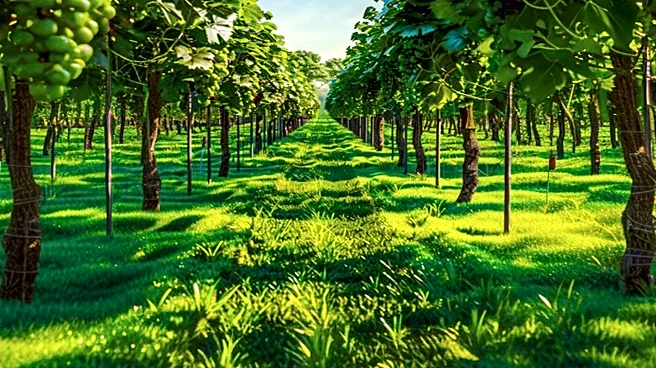What's Happening?
Saalumarada Thimmakka, a self-taught environmental activist renowned for planting nearly 400 banyan trees along a state highway in Bengaluru, passed away at the age of 114. Thimmakka, who had no formal
education, dedicated her life to afforestation and environmental conservation, transforming a 5km stretch into a green corridor. Her efforts began in the 1950s alongside her husband, Chikkaiah, and have since become a symbol of ecological heritage in Karnataka. Thimmakka was admitted to Apollo Hospitals due to bronchial asthma and lower respiratory tract infection, and despite medical efforts, she succumbed to multiorgan failure. Her contributions to environmental activism earned her several accolades, including the Padma Shri in 2019.
Why It's Important?
Thimmakka's work highlights the impact of grassroots environmental activism and the importance of individual contributions to ecological conservation. Her legacy serves as an inspiration for sustainable living and afforestation efforts, demonstrating how personal dedication can lead to significant environmental change. Her passing marks the loss of a significant figure in environmental advocacy, but her work continues to influence policies and inspire future generations. The recognition she received underscores the value of environmental stewardship and the potential for individuals to effect change without institutional support.
What's Next?
Following Thimmakka's passing, there are discussions about honoring her legacy through the establishment of a museum in her name, as suggested by CM Siddaramaiah. Additionally, tree parks named after her are planned to ensure her contributions to environmental conservation are remembered. These initiatives aim to preserve her legacy and continue promoting environmental awareness and sustainable practices. The government and environmental groups may further explore ways to commemorate her work and inspire similar grassroots efforts.
Beyond the Headlines
Thimmakka's story raises broader questions about the role of individual activism in environmental conservation and the potential for community-driven initiatives to address ecological challenges. Her life exemplifies how personal dedication can lead to widespread recognition and impact, encouraging others to engage in similar efforts. Her legacy may also prompt discussions on the integration of traditional knowledge and practices in modern environmental policies.












